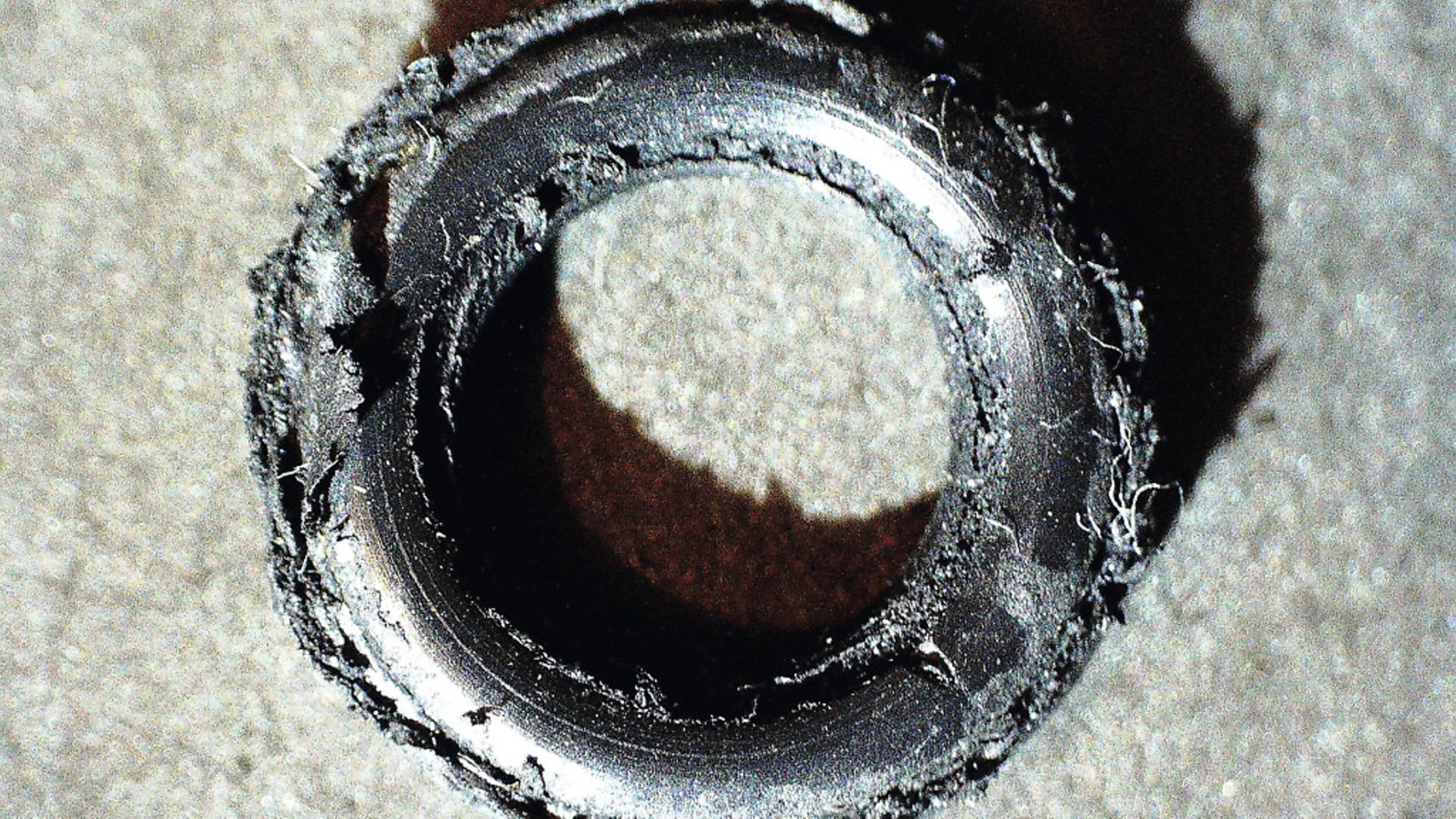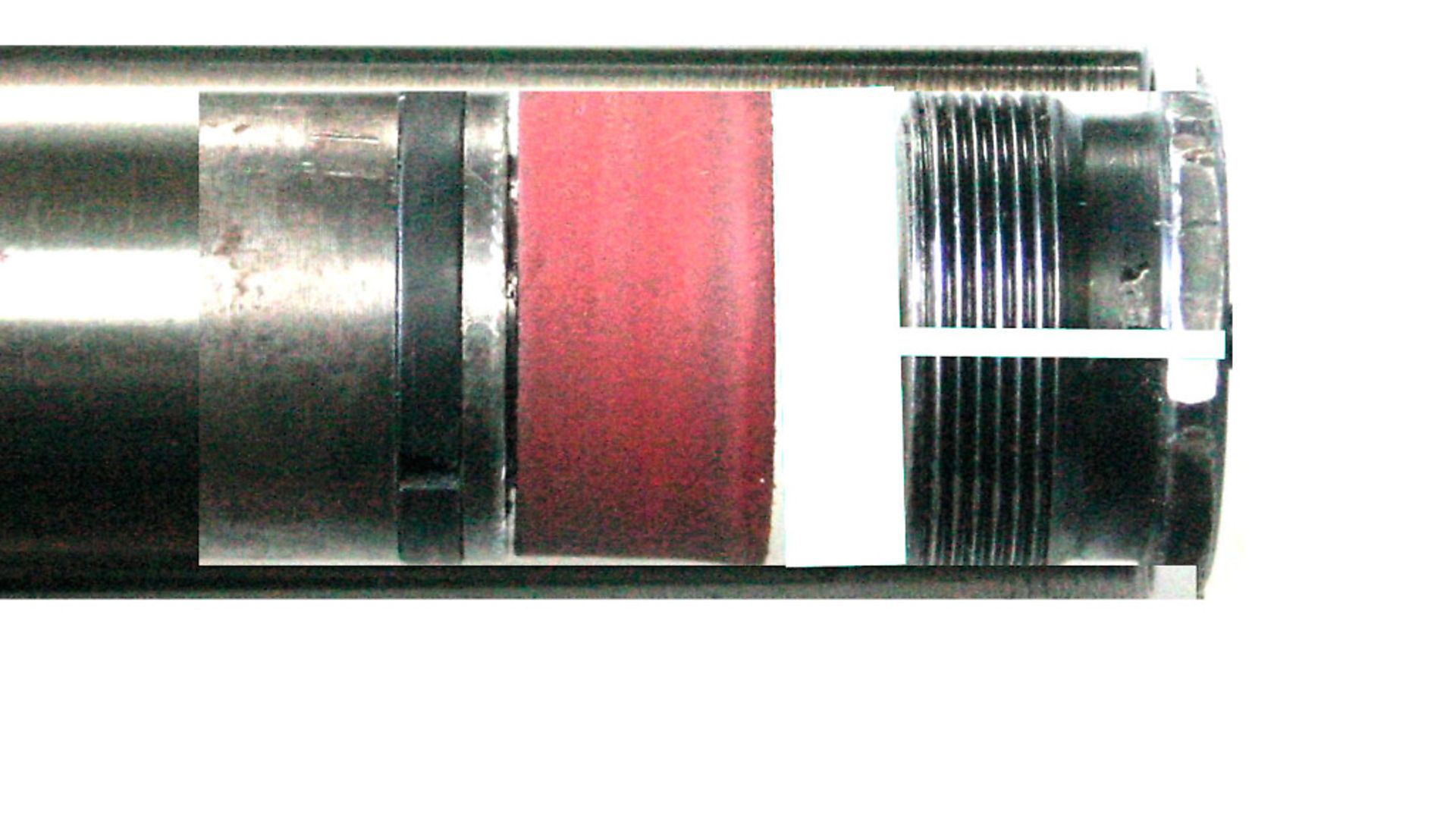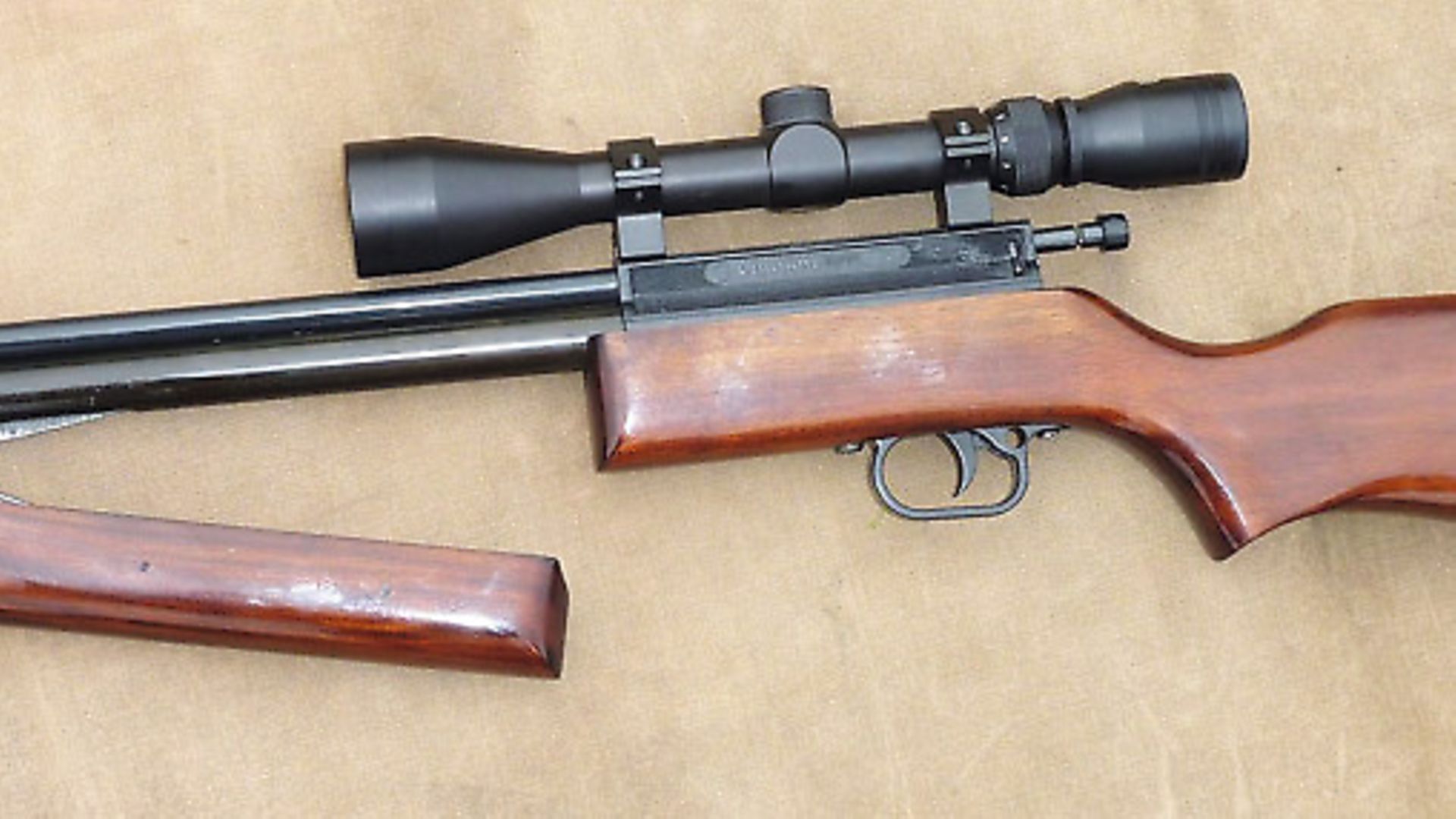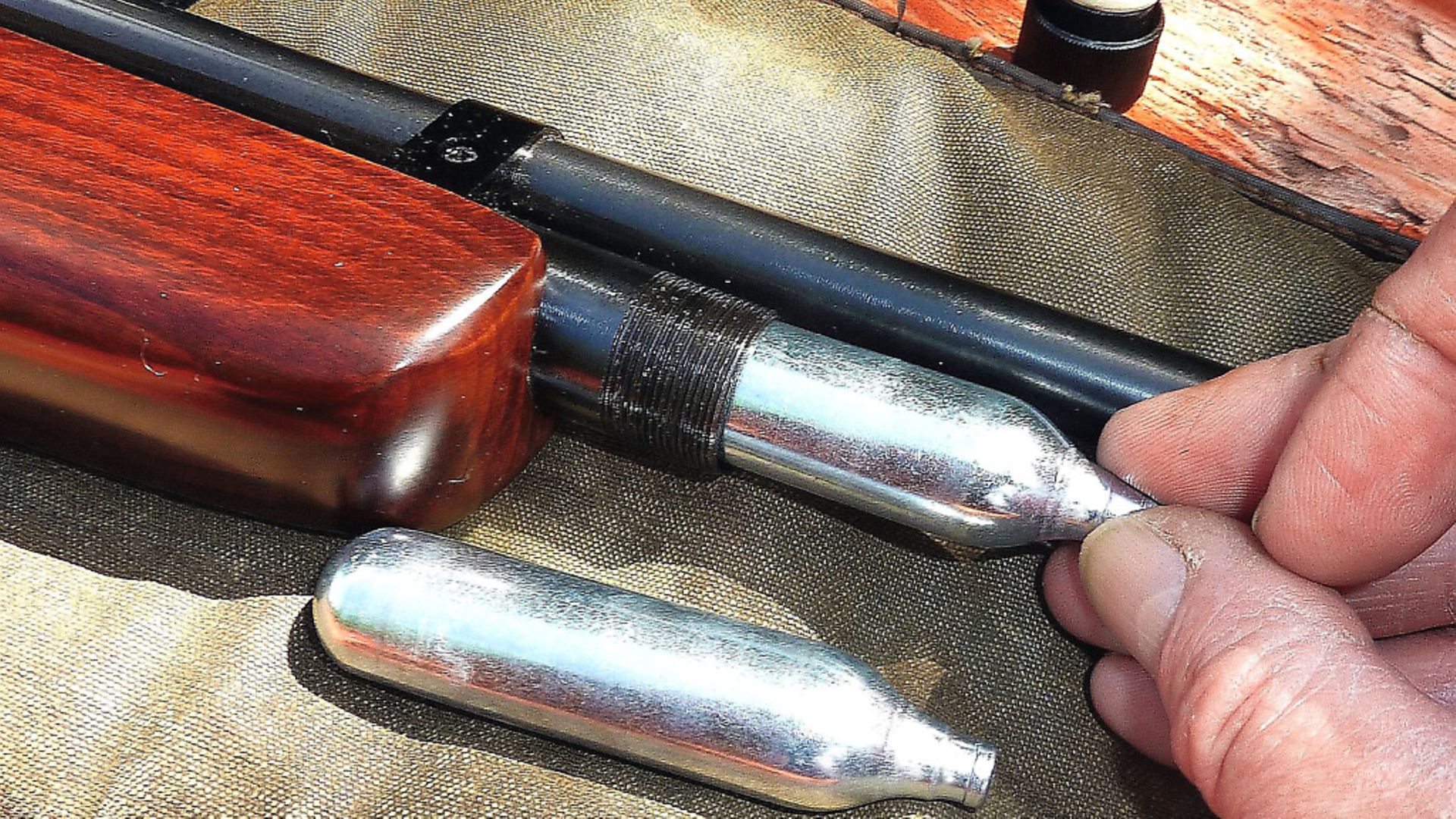Jim discovers that spring airguns and PCPs propel the pellet in exactly the same way
 credit: Archant
credit: Archant
If you ask people what it is that drives the pellet up the barrel of an airgun, most will reply that it is ‘air pressure’, which is correct up to a point, but some way short of the full answer. In fact, it is momentum from air molecules that drives the pellet, and it holds true for all spring airguns, as well as PCPs. At the most fundamental level, spring airguns, and PCPs, work in exactly the same way.
The momentum in an airgun that drives the pellet is the momentum of some of the molecules that make up the air. Before a shot is taken, the air that will propel the pellet might not be going anywhere, but it is not by any means still; it’s a seething mass of molecules, some of which are vibrating, some spinning, some orbiting each other, and the ones that most interest us are careering around, crashing into other molecules like dodgem cars.
What happens is that air molecules collide with the base of the pellet, and bounce off at slightly lower velocity, in the process, transferring some of their momentum to the pellet. Momentum is the product of mass and velocity, and the mass of individual air molecules is very little, so to possess enough momentum collectively to push a pellet, either there must be an awful lot of them at work, or they must be moving at a sufficiently high velocity.
To get the necessary high number of air molecules to transfer momentum to the pellet, all airguns basically compress a large volume of air at atmospheric pressure into a very small volume, forcing the air molecules close together.
 credit: Archant
credit: Archant
Velocity and temperature
The molecules that make up the air around us, and the air inside the airgun, all have motion of one kind or another as already described, and they have mass, and when something has both motion and mass it has kinetic energy, so is able to perform work – such as moving a pellet.
The average kinetic energy, and hence the average velocity of air molecules that have ‘translational’ motion, which is a posh way of specifying those air molecules that are traveling in a straight line and able to collide with the pellet and transfer momentum, can be measured and the unit is the degree Kelvin (K) which is degrees Celsius plus 273. That may seem strange because we think of ‘degrees K’ as a measurement of temperature, but that is exactly what the temperature of a gas is – the average kinetic energy, and hence velocity, of its translational molecules.
 credit: Archant
credit: Archant
Spring airguns
The current fads in spring-airgun tuning all seem to revolve around reducing the amount of air in the system, by reducing the piston stroke or even fitting a sleeve in the cylinder and using a narrower piston; the former quickens the shot cycle, the latter allows a piston of less mass to be used without reducing sectional density, in both cases, reducing recoil displacement, which is why people do it.
There is a potential problem, though, in reducing the air In the system, and it is that with fewer air molecules available to transfer momentum to the pellet, the average velocity of the air molecules has to be raised to maintain momentum. Go below a certain volume, which will vary according to the calibre and other factors, and the reduction in air molecule numbers necessitates generating extremely high molecular velocity (temperature) to maintain the available momentum from the air in order to achieve a target muzzle energy, and the very high temperatures involved can damage some materials, such as seals. A friend brought a short-stroked TX200 for me to look at because the muzzle velocity had reduced and was variable between shots, and the reason turned out to be that the extremely high air temperatures were melting the breech seal.
The high temperature problem caused by the fewer air molecules resulting from excessive short-stroking is exacerbated by the fact that the time interval between pellet start and piston bounce is reduced with a shorter stroke, so fewer molecules are available to transfer momentum to the pellet over a shorter period of time, necessitating even higher temperatures.
 credit: Archant
credit: Archant
PCPs
The air inside a PCP’s cylinder is at the temperature to which the rifle has been acclimatised, so the average velocity of the molecules will be far lower than peak molecule velocity in a spring airgun. In order to achieve sufficient transfer of momentum to the pellet, the number of air molecules colliding with the pellet must be much greater, which means a larger initial volume of air has to be compressed to a higher pressure.
One consequence of the greater quantity of air used in the PCP shot cycle is that a sufficiently great number of air molecules are available to act on pellets for most, if not all of their time in the barrel, so that the pellet accelerates over a greater length of barrel, which explains why the PCP has a general tendency to produce higher muzzle energy with slower, heavier pellets that are being driven in the barrel for longer. If the opening time of the valve can be reduced to less than required to accelerate the heaviest pellets for the full barrel transit, the muzzle energy for lighter and heavier pellets can be evened up to a degree.
If a PCP is left in direct sunlight so that the temperature of the air in the cylinder increases, that means the average kinetic energy and hence velocity and momentum of the air molecules will increase, and the more energetic molecules will increase muzzle energy. The reverse is true, of course, if the air temperature falls.
Efficiency
Spring airguns are a lot more energy efficient than PCPs or pump-ups, and this has long been explained away by the high air temperature generated during the rapid air compression in a spring airgun raising air pressure that is lost between compressing the air to power a PCP and shooting it, but that, whilst easy to understand, does not really explain things.
If we look instead at air molecule velocity and momentum, when the air for a PCP is initially compressed, the velocity and momentum of translational air molecules increases – which we can measure as temperature and pressure – so that greater momentum is available to do work such as accelerating a pellet, but that state does not last for very long, and by the time the PCP is shot, the extra air molecule momentum is all gone, for the following reason.
The freshly compressed air molecules with elevated velocity are continually hitting the wall of their container, and bouncing off at lower velocity, and so the gain in velocity from the initial compression falls over time, until the air molecule’s energy is the same as the container’s (they have the same temperature); after which, molecules bounce off the container wall without any loss of velocity. Once the air container and air have reached thermal equilibrium, the pressure and potential energy remains constant unless the container’s temperature changes, in which case the velocity of the air molecules will increase or decrease to regain a state of thermal equilibrium.
In the spring-airgun shot cycle, there is nowhere near enough time for any significant amount of the elevated air molecule velocity and momentum to be lost to collisions with its container which, at near peak cylinder pressure, has a very small surface area comprising the transfer port, cylinder end wall, piston seal face, and a very short length of cylinder wall, and so the higher molecule velocity gets to work transferring momentum to the pellet. That is why the spring airgun is so much more energy efficient.
So what?
Understanding the fundamental mechanism that drives the pellet can become useful when you’re trying to figure out why an airgun behaves the way it does; why modifications succeed or fail, and why things sometimes go wrong. However, it does not answer every question, because it is only one of the factors that govern the shot cycle, and that’s what makes the workings of the airgun so fascinating for those with inquiring minds.